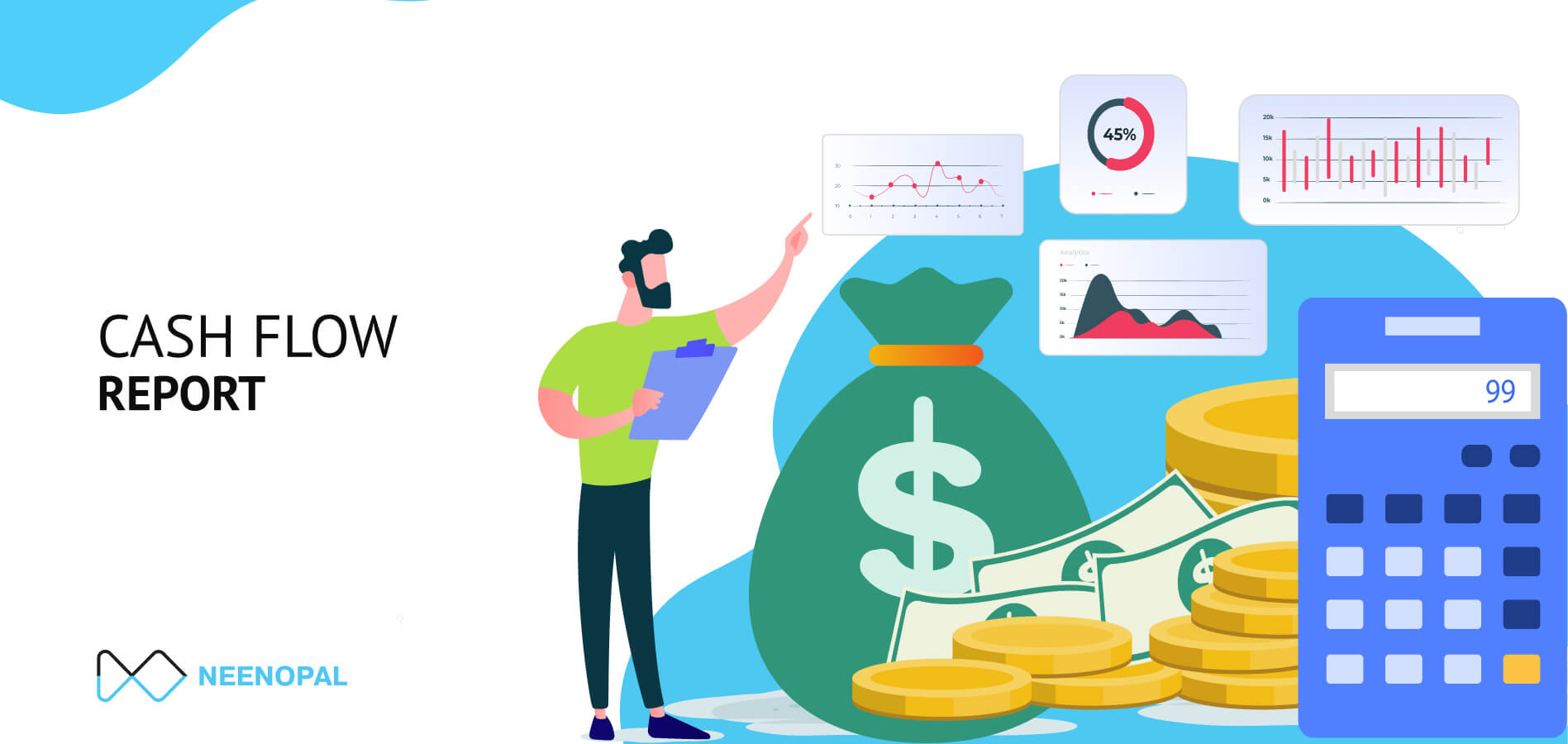For businesses of all sizes, cash flows are as important as profits.An accurate cash flow statement gives the exact fund available, which is vital for making any business plan or decision.
The money in hand determines the liquidity of the firm and its capacity to pay bills. The cash flow dashboard monitors how well the company manages its cash, how it generates money to pay for debts and fund other expenses.
The dashboard also contains the cash flow simulation, which can be used as a liquidity planning tool to predict the company's cash flow.The main goals of the dashboard are to achieve the below goals:
- Understand business cash position
- Compare the cash flows across years/month
- Compare the cash in/out flows across – operations, investing and financing
- Track the journey of cash from the initial balance to the final amount at hand
- Determine areas where the company is exceeding expectations and where it is performing below the line
- Plan the cash flow for the next term and predict the increase/ decrease in cash according to various scenarios.
The Cash Flow Summary
This tab gives the basic cash flow statement focusing on the three categories of money flow – operations, investing, and financing.
|
Goals |
Questions to ask |
Dashboard views |
|---|---|---|
|
To understand in/outflow of cash across Investing, Financing and operations |
How is money distributed across operations, investing and financing?Which of the above three activities brings in maximum cash? |
Summary Pie chart |
|
To understand business cash position |
Is the cash flow positive?What is the net change in cash across the period? |
Cash flow summary table |
|
To compare the cash flows across years/months |
What is the Year-over-Year percentage growth in cash flows? |
Cash flow summary table |

- A positive cash flow indicates the company’s liquid assets are increasing – it will be able to pay off its debts and obligations and would have an amount for dealing with future challenges.
- CFO or cash flow from operations includes cash directly involved in operation activities – production and sale of goods and services. For a company to be financially viable in the long run, this must be positive, i.e., more inflow than outflow.
- CFI or cash flow from investing describes the money generated or spent through the investment activities of the company. Significant investments in Research and Development or other expansion plans can lead to negative cash flow, which is not alarming. This is industry dependent as some industries require huge R&D investments.
- CFF or cash flow from financing includes money used to fund the company and its capital. This provides investors insights into how well the company's capital structure is managed. It provides investors insights into how well the company's capital structure is managed.
Cash Flow Statement & Breakdown
This is a detailed version of the summary tab and includes all elements typical of a traditional cash flow statement. It drills down into the categories in the summary report, explaining where the money was spent or from where the money is received. In the breakdown tab, cash flow in and out are compared across various time periods, giving a detailed picture.
|
Goals |
Questions to ask |
Dashboard views |
|---|---|---|
|
Determine areas where the company is exceeding expectations and where it is performing below the line |
What are the activities under investment, operations and financing? How are they affecting the net change in cash flow? |
Cash flow statement |
|
Cash flow trend over time |
How is the cash in and out flow changing overtime? How is the cash flow trend over time? |
Cash flow graph |
|
Track the activities comprising payments and receipts |
How is the cash from financing ,investing and operating activities contributing to cash payments and receipts? |
Cash Payments BreakdownCash Receipts Breakdown |
- Cash flow statements reveal whether a company is in the early stages of growth or is well-established and profitable. It can also show whether or not an organisation is in transition or on the decline.
- Internally, department heads in the company draw insights about how the particular department is performing, and make changes in their current activity plan to contribute better to the health and well being of the company.
- Positive cash flow indicates business has more money coming in than going out and the excess money can be used for meeting its expenses, funding its investment or expansion plans. But it is also possible to have a profitable business without having a positive cash flow and vice versa.
- Similarly, a negative cash flow doesn’t always mean losses. It simply means that during the period for which cash flow statement was made, the income couldn’t match with expenses. For example, if the bills are due before a customer makes a payment for an already provided service, the cash flow can be negative. To know how the company has been performing, one should compare the cash flows of various periods and analyze the changes.
Cash Flow Waterfall

- Cash flow waterfall can be considered as a summary of the detailed cash flow statement, focussing on the inflow and outflow. It tracks the net movement in the cash balance and the cash closing balance.
- The cash flow waterfall is particularly important when illustrating debt repayments.
- The visualisation depicts the progression of the cash flow and how it gradually increases or decreases to the final balance. It can be viewed across years/ quarters/ months.
- The initial value shows the cash at hand at the beginning of the time period and the increase or decrease of cash over the time is shown by columns, each depicting current cash position at the particular time frame. The last column shows the total cash flow across the time period.
- Each unexpected dip or rise needs to be further investigated to understand the reasons behind it so that unfavourable scenarios will not be repeated.
Cash Flow Simulation
The main functionality of the dashboard is it gives the user a complete interactive experience, wherein the user can increase or decrease each of the below components :
- Revenue - Product, Service, Other
- Cost & Expenses - Cost of sales, Operating expenses
- Cash from Operations - Accounts payable, Accounts Receivable, Other items
- Cash from investing
- Cash from financing
A change made in any of the components is reflected across the dashboard, and the user can instantly see the effect on total cash flow shown on the right side of the screen. The net change in cash is added to the opening balance to get the closing balance.

- This simulation is most useful for CFOs and financial managers while planning the budget. It helps them solve their cash - related issues more proactively. The key objective behind this is the maximization of free cash flow and improving the sustainability of the organization.
- It helps them check various what-if scenarios and predict the change in cash flow accordingly. This assists the companies in improving their liquidity as well as reducing the risks of cash flow issues, a lack of scenario planning can lead to.
- For example, business can check what will be the impact on the closing balance if the product revenue increases by 5% along with a 10% increase in cost of sales.
- If a new investment project is in the pipeline, they can easily check the impact it can have on cash flow and then take a decision.
- Business can also set a target goal for the closing balance and see how various activities affect its journey towards the target. The simulation often helps in gaining the confidence of capital - providers.
Key Terms:
- Total Revenue is the sum of the Product Revenue , Service Revenue and Other Revenue.
- Gross Profit is the difference of Total Revenue and Cost of sales.
- Net Profit (loss) can be calculated as the difference of Gross Profit and Operating expenses.
- Cash from Operations is the sum total of Accounts payable, Accounts receivable and Other items.
- Cash change is the sum of Net Profit and Cash from Operations, Investing and financing.
- Closing balance is the sum of Cash change and Opening Cash Balance.
Conclusion
Cash flows are important for running a business and performing financial analysis. Companies try to formulate strategies to increase the cash flow. The insights from the dashboard can aid the financial managers in this process and help them make data-driven decisions.





